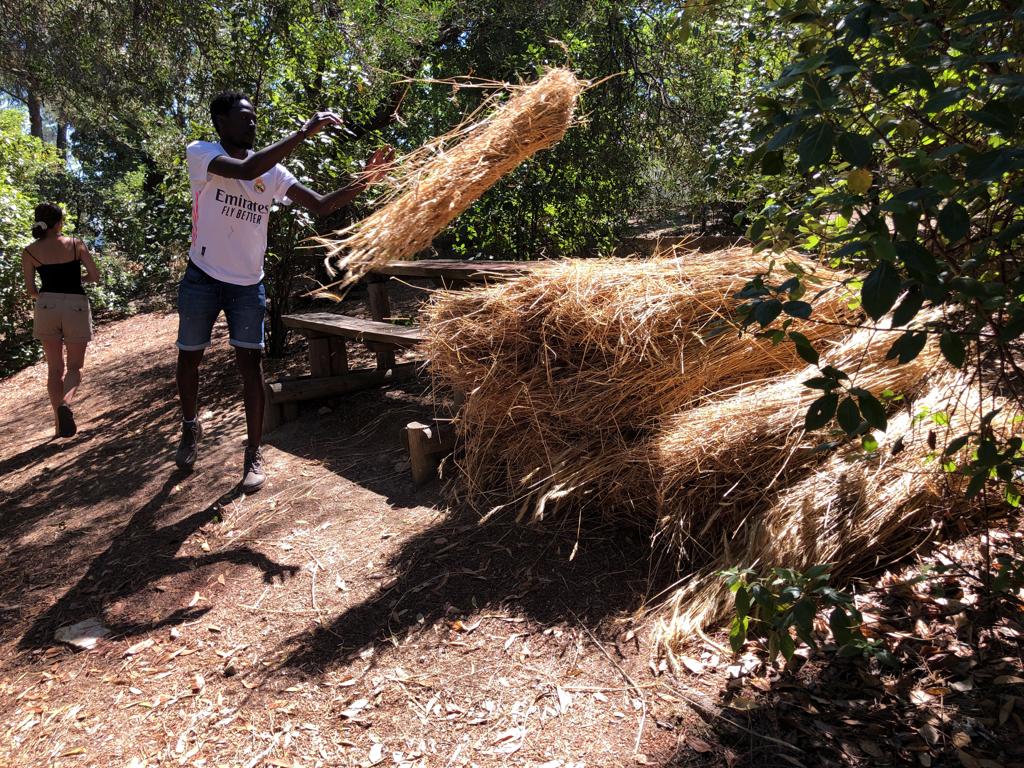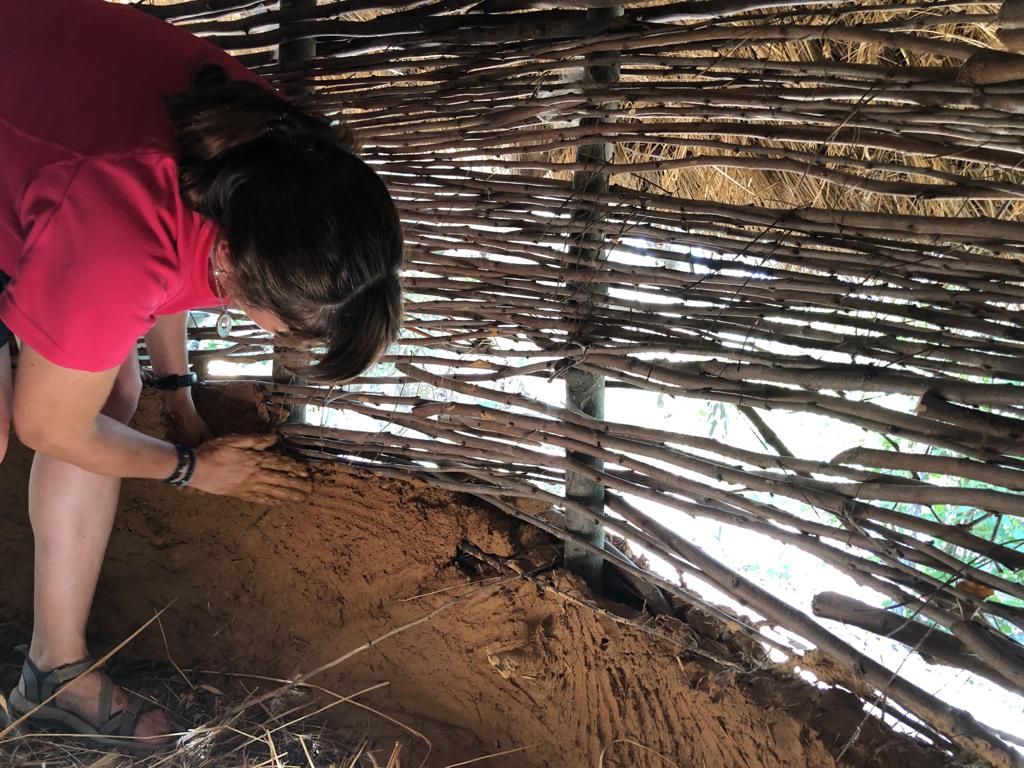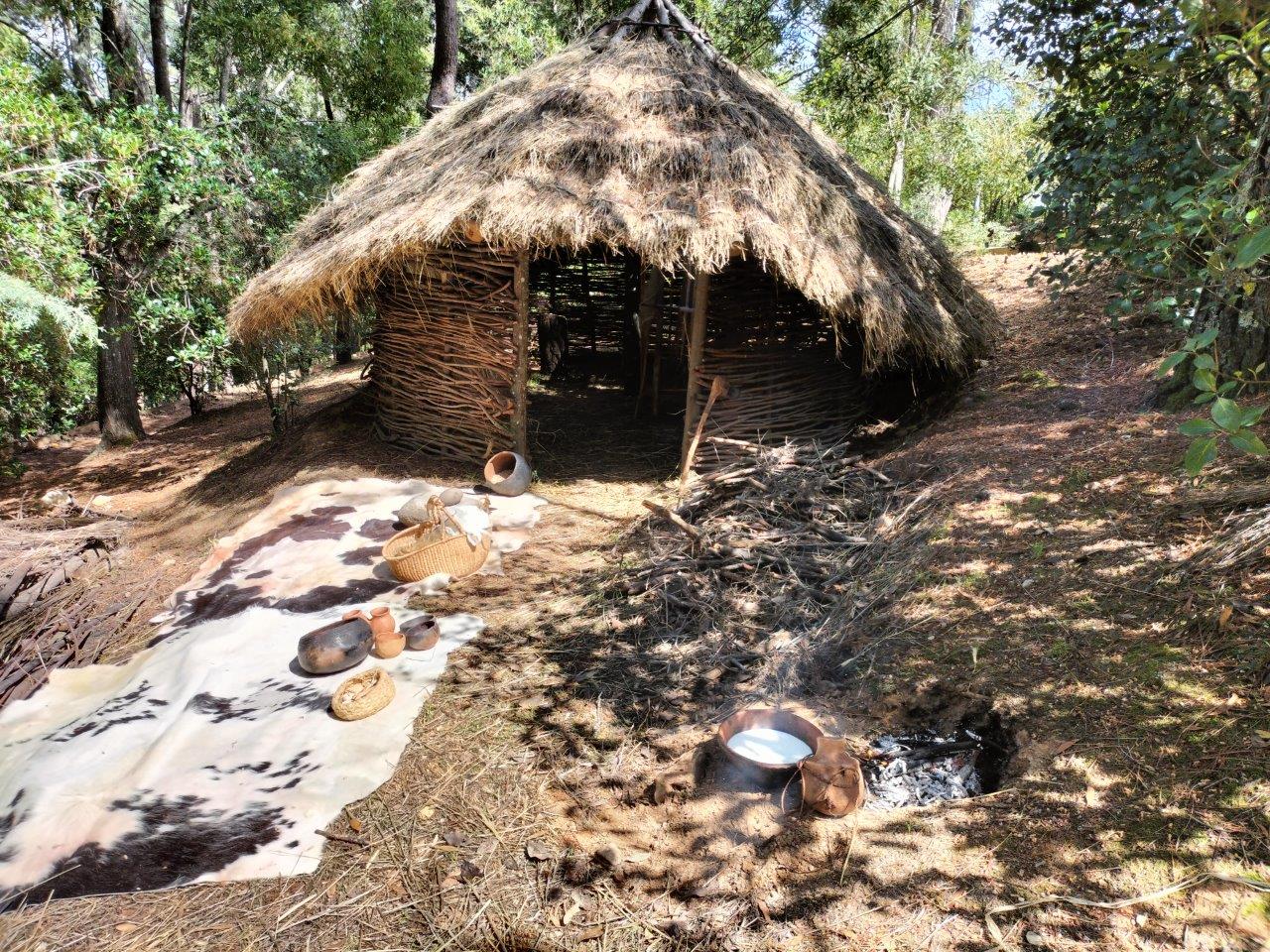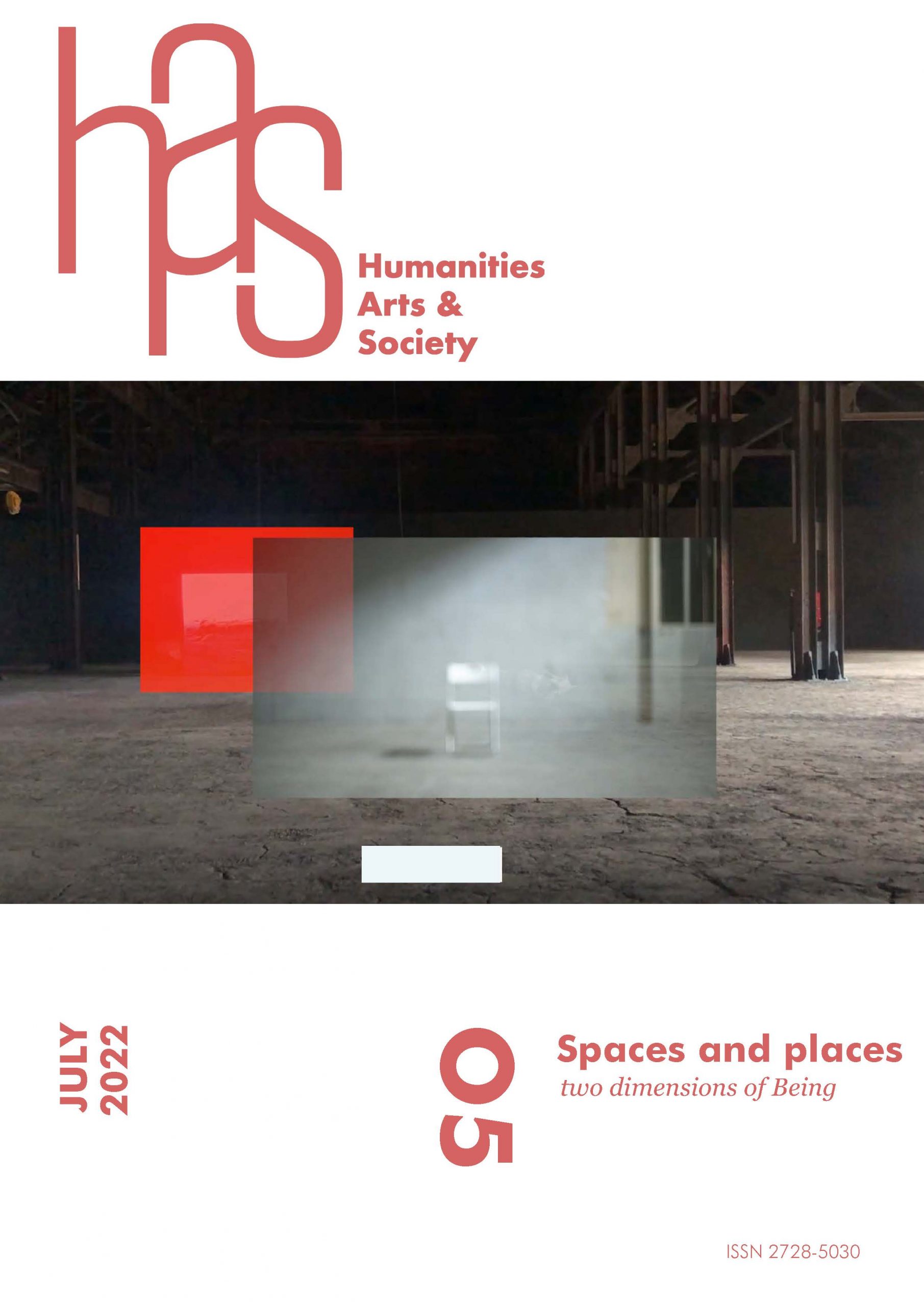The Prehistory Park of Mação, Portugal, was inaugurated in 2022. It is a space that invites visitors to create tools and build structures from different prehistorical eras, spanning from the Upper Paleolithic to the Bronze age. Its purpose is to bring visitors to perform tasks that may trigger a cognitive link between contemporary and archaic gestures and skills rather than to offer a theatrical reenactment of the past. In this sense it differs from an archaeodrome.
Activities based on experimental archaeology are part of a long-established didactic methodology in introducing people to past societies, their skills, technologies, and survival strategies. Mação’s Prehistoric Park stands out by its didactic dimension by providing fundamental educational content (in physics, chemistry, crafts, etc.) through experimentation. Moreover, it engages with debates on meaning (e.g., it hosted philosophy debates on World Logic Day) and ultimately aims to discuss the relation between space, time, and identity through building practices (namely the construction of the park’s habitat structures).
This project has been primarily designed as an initiative in social innovation rather than educational. Mação sits in the center of Portugal and is a low-density region, affected by demographic dispersal, ageing, isolation, low economic diversity, youth exodus and decay of sociocultural cohesion. Accordingly, the park has been conceived as a space of knowledge building through the engagement and interconnection of young and older populations, fostering traditional knowledge transfer across generations.
The park’s structures are, by nature, perishable ensembles that require endless reconstruction. Hence, the park’s purpose is to expand alongside with the visitors’ development of knowledge and skills. In this way, visitors become co-creators of the structures as a result of their invested time, energy and creativity. Through this process they build a sense of shared ownership, i.e., a sense of place.





Aknowledgements
The setting of the Andakatu Archaeosocial Park is supported by FEDER funds of the European Union and Portugal 2020 programme, through the project POISE-03-4639-FSE-000577. Authors also acknowledge the relevant support of project CENTRO-04-3559-FSE-000158, through which the park has been integrated in a wider network of knowledge building through experiencing the landscape through archaeological features. This project would not be possible without the core engagement of the Municipality of Mação, that provided complementary funds and the land for establishing the park, and the collaboration of the Polytechnic Institute of Tomar, for its aide in research, and the Enterprises Association NERSANT, for its aide in economic sustainability.
Follow the project here https://www.facebook.com/ArqueoParqueAndakatu/
Discover more here https://youtu.be/3h7bS-IB–M
Luiz Oosterbeek – Professor and project coordinator, Geosciences Centre (UD 73), Polytechnic Institute of Tomar, Portugal
Pedro Cura – Museum of Prehistoric Art of Mação.Portugal, Instituto Terra e Memória, Geosciences Centre (UD 73)
Anabela Pereira – Museum of Prehistoric Art of Mação.Portugal, Instituto Terra e Memória, Geosciences Centre (UD 73)
Sara Garcês – Researcher of project CENTRO-04-3559-FSE-000158, Geosciences Centre (UD 73), Polytechnic Institute of Tomar, Portugal
Hugo Gomes – Researcher of project CENTRO-04-3559-FSE-000158, Geosciences Centre (UD 73), Polytechnic Institute of Tomar, Portugal
Rodrigo Santos – Museum of Prehistoric Art of Mação.Portugal, Instituto Terra e Memória, Geosciences Centre (UD 73)
Anícia Trindade – Researcher of project CENTRO-004-3559-FSE-000158, Techn&Art Centre, Polytechnic Institute of Tomar, Portugal
Douglas Cardoso – Researcher of project CENTRO-04-3559-FSE-000158, Smart Cities Ci2 Centre, Polytechnic Institute of Tomar, Portugal
Eduardo Ferraz – Researcher of project CENTRO-04-3559-FSE-000158, Techn&Art Centre, Polytechnic Institute of Tomar, Portugal
Luiz Oosterbeek – Professor and project coordinator, Geosciences Centre (UD 73), Polytechnic Institute of Tomar, Portugal
Pedro Cura – Museum of Prehistoric Art of Mação.Portugal, Instituto Terra e Memória, Geosciences Centre (UD 73)
Anabela Pereira – Museum of Prehistoric Art of Mação.Portugal, Instituto Terra e Memória, Geosciences Centre (UD 73)
Sara Garcês – Researcher of project CENTRO-04-3559-FSE-000158, Geosciences Centre (UD 73), Polytechnic Institute of Tomar, Portugal
Hugo Gomes – Researcher of project CENTRO-04-3559-FSE-000158, Geosciences Centre (UD 73), Polytechnic Institute of Tomar, Portugal
Rodrigo Santos – Museum of Prehistoric Art of Mação.Portugal, Instituto Terra e Memória, Geosciences Centre (UD 73)
Anícia Trindade – Researcher of project CENTRO-004-3559-FSE-000158, Techn&Art Centre, Polytechnic Institute of Tomar, Portugal
Douglas Cardoso – Researcher of project CENTRO-04-3559-FSE-000158, Smart Cities Ci2 Centre, Polytechnic Institute of Tomar, Portugal
Eduardo Ferraz – Researcher of project CENTRO-04-3559-FSE-000158, Techn&Art Centre, Polytechnic Institute of Tomar, Portugal
